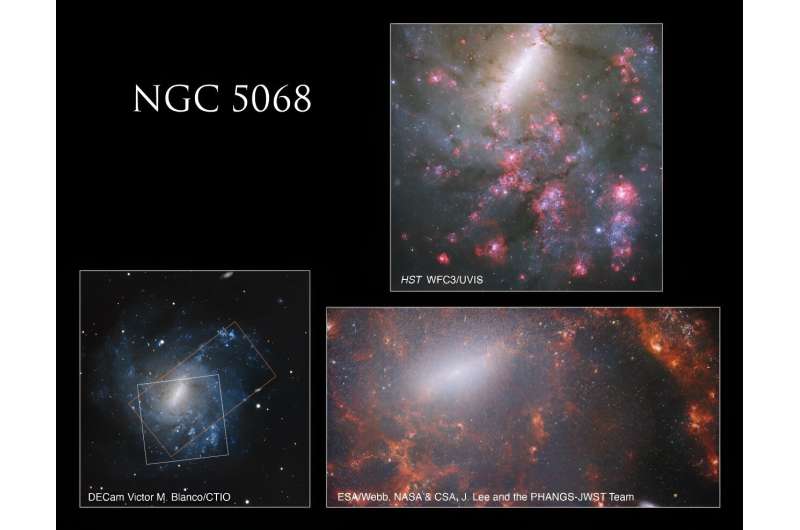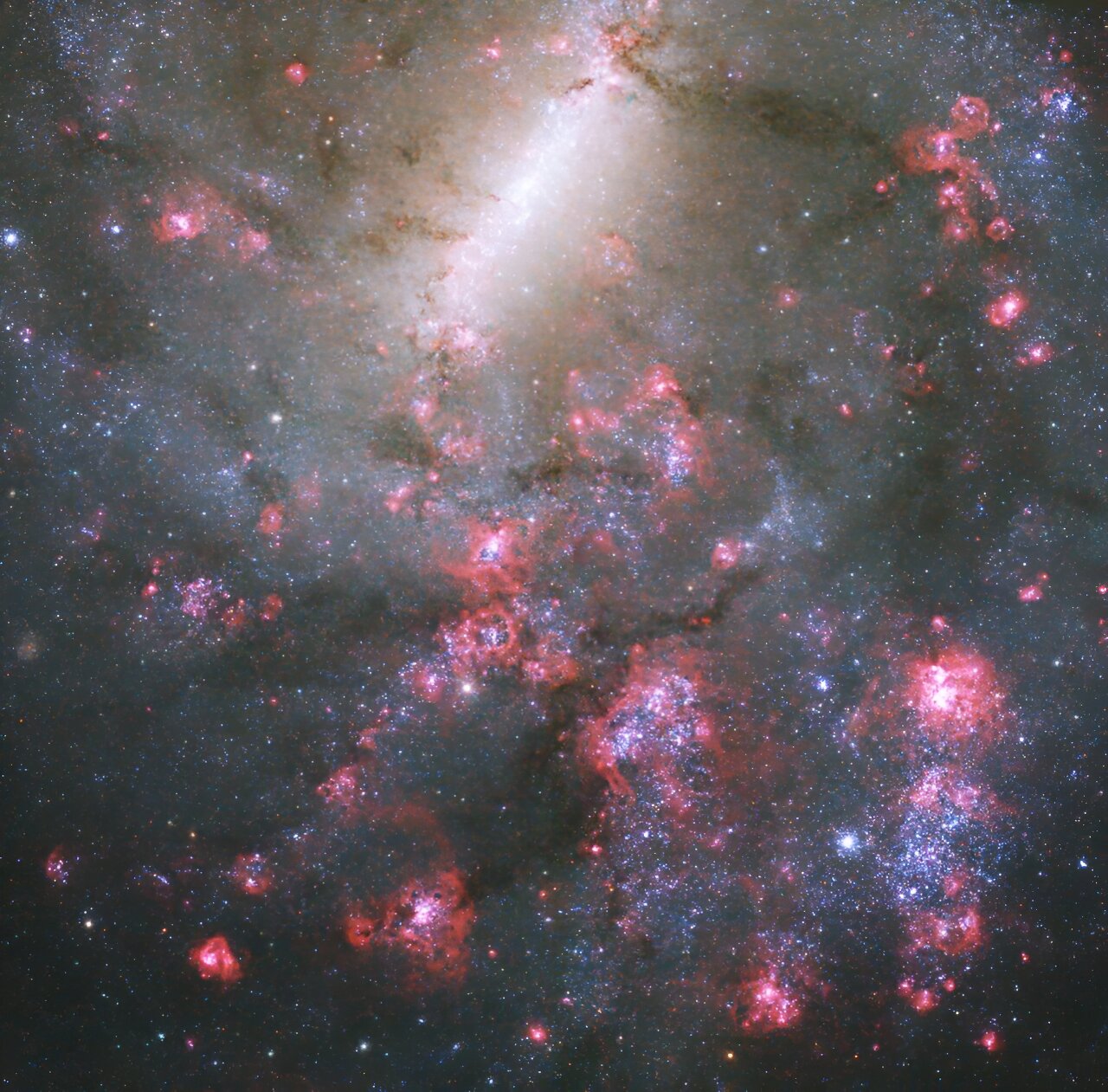Patches of bright pink and wisps of dark red paint the foreground of this new NASA Hubble Space Telescope image. NGC 5068 is a barred spiral galaxy with thousands of star-forming regions and large quantities of interstellar dust. First discovered by British astronomer William Herschel in 1785, NGC 5068 sits in the southern region of the constellation Virgo and is around 20 million light-years away. Astronomers estimate the galaxy is 45,000 light-years in diameter.
At the top center of this image lies NGC 5068’s bright central bar, a densely packed region of mature stars. A black hole lurks behind the bar, tugging the stars together with its intense gravitational pull. The bright pinkish-red splotches along the bottom and sides of the image are regions of ionized hydrogen gas where young star clusters lie. Though not very clear from this angle, these splotches are along the galaxy’s spiral arms, where new stars typically form.
Astronomers also found at least 110 Wolf-Rayet stars in NGC 5068. Wolf-Rayet stars are a type of old, massive star that loses mass at a very high rate. They are typically more than 25 times the mass of our sun and up to a million times more luminous. There are about 220 Wolf-Rayet stars in our Milky Way galaxy.

NGC 5068 is difficult to see with human eyes because it has relatively low surface brightness. Luckily, Hubble’s ultraviolet, visible, and near-infrared capabilities helped capture the beauty and intrigue of this galaxy. Different cosmic objects emit different wavelengths of light; young and hot stars emit ultraviolet light, so Hubble uses ultraviolet observations to find them.
In June of 2023, NASA’s James Webb Space Telescope released its own infrared image of NGC 5068 as part of a science campaign to learn more about star formation in gaseous regions of nearby galaxies. Many of Webb’s observations are building on earlier Hubble observations, specifically a collection of 10,000 images of star clusters.
Citation:
Hubble’s multi-wavelength view of recently released Webb image (2023, October 9)
retrieved 10 October 2023
from https://phys.org/news/2023-10-hubble-multi-wavelength-view-webb-image.html
This document is subject to copyright. Apart from any fair dealing for the purpose of private study or research, no
part may be reproduced without the written permission. The content is provided for information purposes only.
Denial of responsibility! TechCodex is an automatic aggregator of the all world’s media. In each content, the hyperlink to the primary source is specified. All trademarks belong to their rightful owners, and all materials to their authors. For any complaint, please reach us at – [email protected]. We will take necessary action within 24 hours.

Jessica Irvine is a tech enthusiast specializing in gadgets. From smart home devices to cutting-edge electronics, Jessica explores the world of consumer tech, offering readers comprehensive reviews, hands-on experiences, and expert insights into the coolest and most innovative gadgets on the market.


